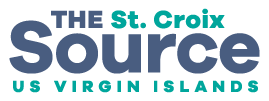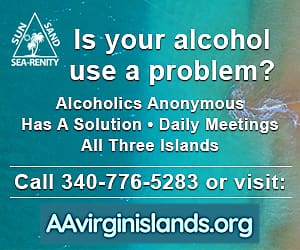
The unemployment rate in the U.S. Virgin Islands, at 3.2 percent, is relatively low, but it rose slightly last year.
Two hundred seventy-seven residents are now collecting benefits. They have no reason to be concerned about the chaos in Washington, D.C. The Trust Fund from which those residents receive payment is funded through the unemployment tax rate placed on employers.
With the Trust Fund now at $25 million, the employer contribution rate, according to a Virgin Islands Labor Department press release, is dropping this year to 4.06 percent from 4.11 percent in 2024. Commissioner Gary Molloy said in an email to the Source that only if the trust went broke would it be forced to borrow from the federal government.
He added that employment had dropped slightly from 2023 to 2024, a 1.1 percent decline. The approximate 400 job losses were primarily in the finance and government sectors.
In its effort to keep the Trust Fund healthy, according to the email from Molloy, the Labor Department has taken significant steps to manage the unemployment system. He wrote that the department repaid $20 million of its $87.5 million Title XII loan at the end of last year, reducing the balance to $59.7 million.
According to the press release, the department anticipates further rate decreases in 2026 as the repayment of advances continues to reduce financial pressures on the fund. Additionally, absent any major economic disruptions, employers can expect continued improvements in the rate structure.
What a person receives as an unemployment benefit is determined by average wages in the territory and what the person received when employed. The average weekly wage in the territory is now over one thousand dollars.
The department plans to introduce an Employer Tax Portal next month to make it easier for employers to make their contributions.
The site will allow employer account management and wage reporting online, as well as electronic tax payments and compliance tracking.
The Labor Department has several divisions besides the one handling unemployment benefits:
- Bureau of Labor Statistics – tracks employment trends and labor market data.
- Workforce Development Unit – provides job training, apprenticeships, and employment support.
- Labor Relations – ensures compliance with labor laws and employer-employee relations.
- Occupational Safety and Health – regulates workplace safety and health conditions.
- Workers’ Compensation Administration – manages and pays claims for work-related injuries.
- Hearing and Appeals – handles unemployment benefits and labor case disputes.
- Business and Administration – provide operational support and technology services.
According to Molloy’s email, the department focuses on several areas. They include:
- Fixing WAPA: Training a workforce skilled in energy sector jobs.
- Improving Roadways: Supporting construction and public works employment.
- Solving Children and Family Issues: Expanding youth employment and apprenticeship programs.
- Reducing Inflation: Helping workers secure stable and well-paid jobs.
- Rebuilding the USVI: Strengthening labor force participation in recovery efforts.










